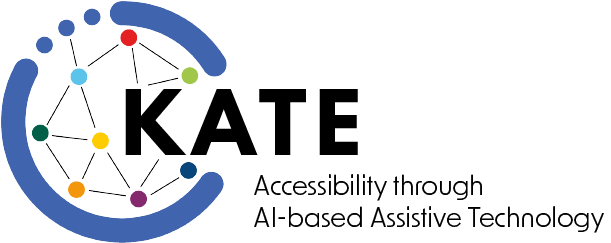Summary
The goal of the doctoral program is to improve the autonomy and participation of persons with special needs through the use of assistance systems based on artificial intelligence (AI). Three topics will be addressed in the doctoral program: (i) AI-based methods for text, audio, and multimedia document processing, (ii) AI methods for interactive training and assistance systems, and (iii) investigation of the consequences and ethical, legal, social, and societal implications of AI systems for people with disabilities
The following research projects are running:
I) AI-based methods for text, audio and multimedia document processing
- Visual Content Analysis to Improve Document Accessibility (Stiefelhagen / Wölfel)
- AI support to overcome perceptual, cognitive and language barriers (Waibel)
II) AI methods for interactive training and assistance systems
- Pedagogical speech assistant to supplement lectures for students with visual impairments (Wölfel)
- Interactive assistance system to support people with cognitive limitations or language barriers through comprehensible work instructions in multi-variant production (Kinkel / Wölfel)
- Development of an Augmented Reality based Interactive Assistance System to support people with cognitive impairments to work on Applications in production and / or distribution environment (Wurll / Hein)
- Vision-Language Navigation: Visual-Question-Answering to support Orientation and Navigation of Blind Users (Stiefelhagen / Gerling)
- Assistive robotics and interactive applications to assess and train motor and cognitive performance (Woll / Krell-Rösch)
- AI-based Activity Recognition “In the Wild” for Activation of Elderly People in Home Care Situations (Laubenheimer)
- Interactive training and assistance systems for fall prevention and training of motor and cognitive performance of persons with cognitive/physical impairments (Hein / Woll / Krell-Rösch / Wurll)
- Recognition of Human Motion Intention for Lower Limb Exoskeletons (Asfour)
III) investigation of the consequences and ethical, legal, social, and societal implications of AI systems for people with disabilities

